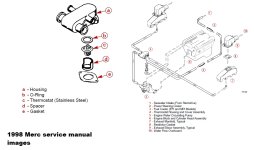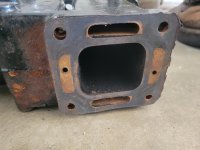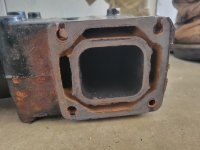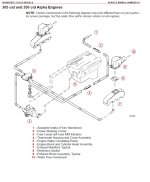InstaGator
Contributing Member
Hello again everyone, I've looked through threads and couldn't find an answer for my issue(other than what I've already done). I replaced my risers and manifolds on my 98 Mercruiser 5.7 with Alpha I Gen II drive. I've never noticed this before but after replacing the manifolds and risers the starboard manifold gets quite a bit hotter than the port side. I thought maybe it was just because it was on the hose but I took it to the lake and let it get up to temp(170 for my boat is normal) and the port side was about 98 while the starboard side was about 128. I've read that the two sides can vary(many reasons for why they vary but either way I've heard its normal) but should they be that much different? The boat runs great, but why such a big difference. I wish I would have known about this early so I could have checked the flappers(the flaps that keep water from back flowing into the exhaust) while I had the risers off but I never checked them since the boat has always ran great. Any suggestions on why this is happening or is this normal? I am thinking about taking the risers off again to check the flaps, but I want to see if there is another solution before I have to replaced the brand new riser gaskets after taking them back off. I've already took the hoses going to the manifolds off and they are clear. Didn't see much rust/debris in the thermostat housing. Thanks in advance. I just want to be clear of any issues when summer comes up and its used every weekend.





